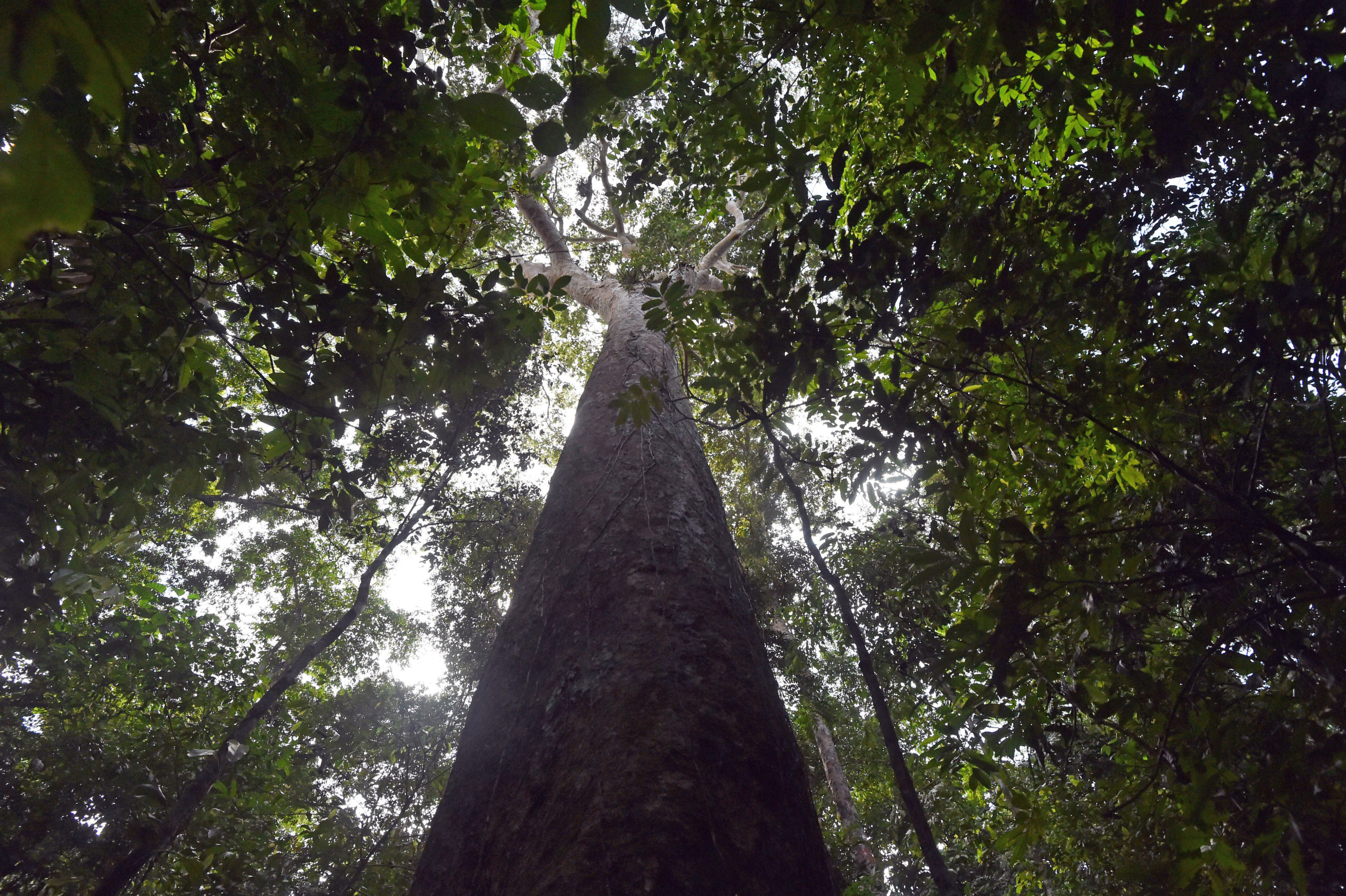
Panama’s Environment Minister Juan Carlos Navarro describes himself as “a retired politician.” But after a long political career, including two terms as mayor of Panama City, old habits die hard. When describing his country’s economics, Navarro drew on a political adage coined by campaign strategist James Carville.
“To paraphrase Carville, it’s about nature, stupid,” Navarro told Newsweek.
Carville’s catchphrase was about the central importance of the economy, of course, but Navarro’s twist emphasizes that economic activity, in turn, depends on nature.
As evidence, Navarro pointed to the Panama Canal, not far from the summit’s venue, and the many rivers and streams that feed into it.
Rodrigo Arangua/AFP via Getty Images
“From that same watershed comes all of the water to drive the canal that permits safe passage for 6 percent of global commerce,” he said. “And this is the backbone of the Panamanian economy.”
Panama is hosting a four-day Nature Summit this week to highlight those connections between the environment, economy and climate change. The summit takes place in concert with a Global Climate Week in Panama, organized by the United Nations.
In November, the 30th annual U.N. conference of the parties (COP30) climate talks will take place in Belem, Brazil. That will be the first U.N. climate talks held in the Amazon, a natural venue to highlight nature-based solutions to climate change, and Navarro said the Panamanian summit is meant to set the stage.
“We’re holding the nature summit precisely to be able to come up with ideas that can be used as input in the upcoming COP30 in Belem,” Navarro said.
The summit brought together leaders from businesses, governments, philanthropies and indigenous communities to come up with specific ways to support and pay for conservation programs that help to capture carbon.
Oceans, forests and other ecosystems draw down carbon dioxide from the atmosphere, making nature conservation a vital part of meeting international climate targets. But the connection between climate change and nature works in the other direction as well. Climate change stresses ecosystems in ways that threaten wildlife and the wide range of services we depend on from nature, including fisheries, forest products and clean water.
In his remarks Tuesday at the Nature Summit, U.N. Climate Change Executive Secretary Simon Stiell linked climate change to the prolonged drought affecting the Panama Canal.
“Climate change has already driven water levels lower, slowing shipping and disrupting trade routes,” Stiell said. “The same droughts that plague the canal are affecting essential commodities worldwide, reducing harvests, emptying shelves, and pushing families into hunger.”
Two reports just out this week show the profound threat climate change poses to natural systems and the urgent need to conserve them. – want to make sure you’re OK with that.
A study published Tuesday in the journal BioScience found that more than 3,500 animal species are threatened by impacts from climate change. Until recently, the study’s authors said, the main causes of biodiversity loss have been habitat loss and overexploitation by people.
“But as climate change intensifies, we expect it to become a third major threat to the Earth’s animals,” lead author William Ripple, a professor of ecology at Oregon State University, wrote. “Rapid and effective climate mitigation is crucial now more than ever for saving the world’s biodiversity.”
A report released on Wednesday by researchers at the University of Maryland and the nonprofit group World Resources Institute found that the global loss of forests has reached a record high.
About 17 million acres of tropical primary forests were lost in 2024, according to the report, nearly double the amount lost in 2023. And the researchers said that for the first time in their records the primary cause of forest loss is not deforestation due to agriculture, but rather, loss from wildfires.
Heat and drought due to climate change can make conditions ripe for large and intense wildfires and, in turn, the fires release much of the carbon stored in forests into the atmosphere.
“If this trend continues, it could permanently transform critical natural areas and unleash large amounts of carbon — intensifying climate change and fueling even more extreme fires,” Peter Potapov, co-director of the Global Land Analysis and Discovery Lab at the University of Maryland, said in a statement. “This is a dangerous feedback loop we cannot afford to trigger further.”
The report’s authors say that in order to meet global goals for forest protection the world must reduce deforestation by 20 percent every year through stronger fire prevention, better enforcement of trade regulations and more funding for forest protection.
In an ironic twist for the nature summit, the total area of tropical forests lost last year roughly equals the size of Panama.

Rodrigo Arangua/AFP via Getty Images
Environment Minister Navarro said it is critical to ensure that protected areas are actually protected on the ground.
“Panama is leading the charge globally to demonstrate that we can turn paper national parks and reserves into real protected areas and national parks,” he said, and he described an increase in staffing at parks, better equipment for rangers and new technology to detect forest encroachment or poaching. “We’re getting it done, we get it, and now we’re helping to lead efforts globally in this same direction.”
